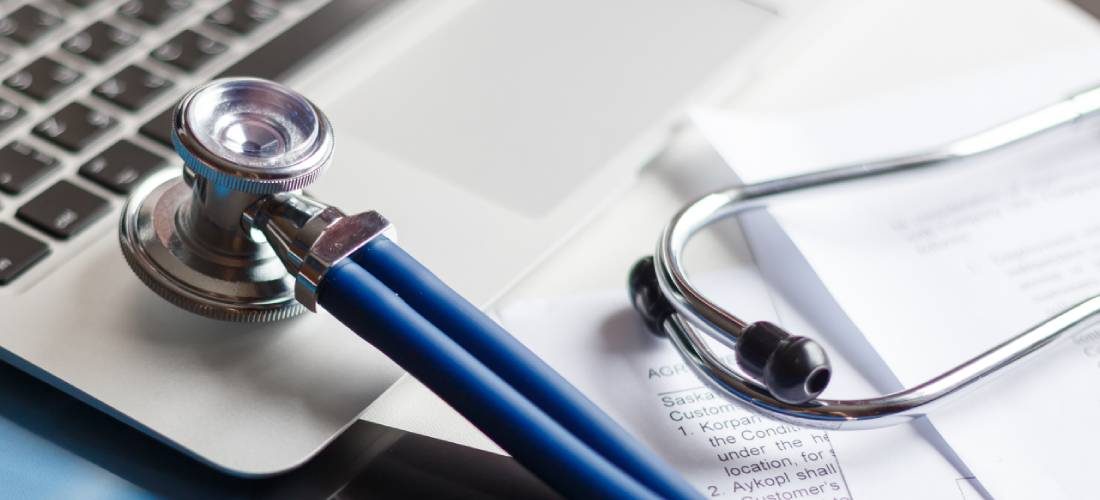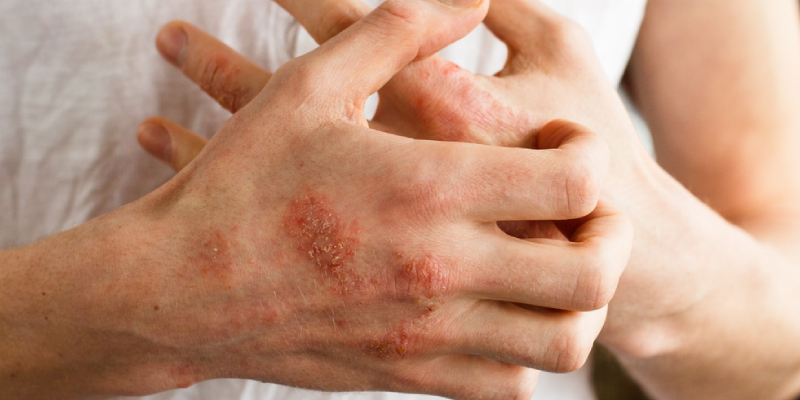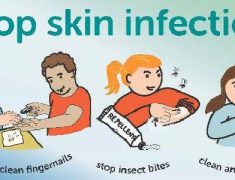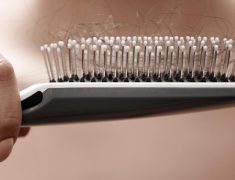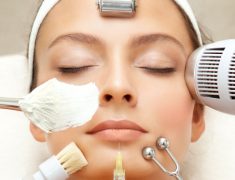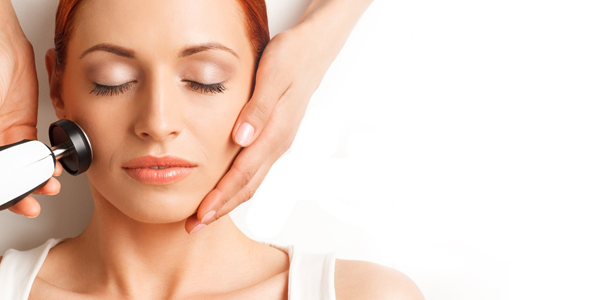Our skin is not just an outer envelope that wraps cells and tissues inside but part of our body that extends to present itself to the outside world. Be it from bacteria, fungi, viruses, or humans, our skin’s duty is to protect, prevent and pertain. As a rule of thumb, take care of your skin to keep every other disease at bay. Being the largest organ in our body, and that gets exposed to all atmospheric elements, one must know about the different skin conditions and their treatments. Every individual is said to have their own set of skin types, but few occurrences are somewhat repetitive and have a pattern to be observed.
Scratching The Surface
Acne is one of the skin conditions that occur commonly to most people of all ages. It occurs when the pores in the skin at the base of the hair get clogged with oil or dirt from dead skin cells. Acne can be moderate from red spots to severe red lumps that are painful. The most common skin regions that are affected by acne are back, face, chest, neck and shoulders. Gels, Oral antibiotics, ointments with salicylic acid or benzoyl peroxide, topical creams, treat mild acne conditions. Chemical peels, mild acidic cleansers, light therapy, microdermabrasion and more potent antibiotics are best for treating more severe acne. Acne could also cause scars on the skin, and it could affect the tone of your skin and its general appearance. Dermabrasion, light therapy, laser resurfacing, soft fillers, and microdermabrasion are the procedures to diminish the scars.
More Info About : Reasons For Hair Loss
Another skin condition that is usually harmless is Birthmarks. But when it is growing too quickly, growing on an internal organ, or related to another medical condition, it needs to be checked up by a trained dermatologist. Sometimes for cosmetic purposes, they are removed as well, when they increase in size and darkness over time, make people self-conscious and affect their self-esteem. Laser treatments and surgical removal may treat birthmarks.
For pregnant women, those who take hormone replacement therapy, or who take oral contraceptives; grey, brown, tan, discolouration on the forehead, cheekbones, upper lip, chin, nose are symptoms of Melasma. Usually, it gets worse under the sun. This discolouration on the skin goes away after a few months of childbirth or change in hormone intake. Treatment varies from exfoliating treatments and topical medication, including chemical peels, laser resurfacing, microdermabrasion or dermaplaning.
Skin losing its natural colour results in Vitiligo. It appears as light patches of skin with undefined borders. It could affect skin, hair, or the eye. It is not life-threatening or contagious. This pigmentation condition should get treated by restoring some of the colour by topical medications, light therapy, and the excimer laser.
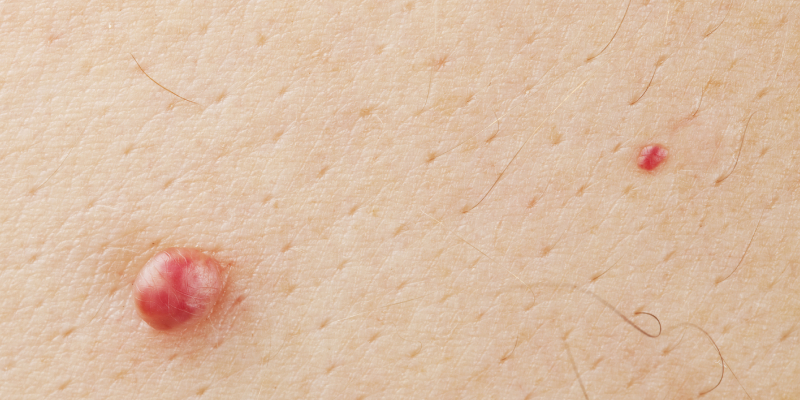
Affected By Time
Blood capillaries cluster under the skin and may cause red or purple skin growths that are usually harmless called Cherry angiomas. They are often too small and could be enlarged with time, and get raised or rounded. The treatment gets seldom advised as they are harmless. Rarely, they indicate other disorders. For cosmetic purposes or if bleeding occurs, treatment could get suggested by a dermatologist.
Blisters occurring on the lip and around the mouth that are painful and contagious are Cold Sores. The Herpes simplex virus (HSV-1) causes it and infection spreads from the person’s saliva or mouth. The blisters break open and crust over before healing between a few days up to two weeks. Topical treatments and medication help reduce pain and discomfort.
When the skin becomes chronically dry, inflamed, itchy, and red, it could be symptoms for Eczema or atopic dermatitis. The severity of this often leads to the skin becoming scaly, chapped, or cracked, and developing small red bumps. Eczema usually appears on the wrists, elbows, hands, ankles, feet, neck and face. Mild eczema could get kept at bay by checking the triggers such as low humidity environments, stress, hot showers, allergens, harsh soaps. Stay away from dust, pet dander, allergic foods and cigarette smoke. If it covers large areas of the body, accompanied by oozing sores, and with evidence of infection, get advice from your dermatologist.
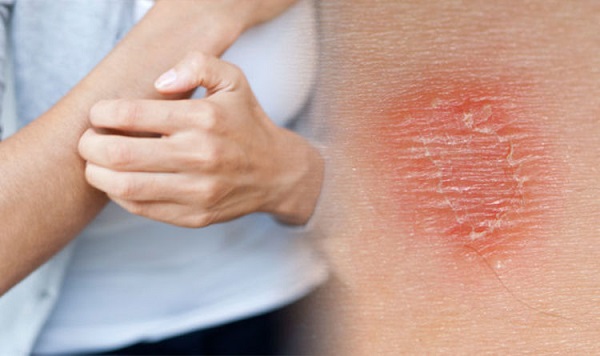
Seek Immediate Assistance
With age, our skin loses the ability to produce oils that keep it moisturized. Rough patches of skin that are scaly, tightness, and itchiness, especially on the lower legs, arms, hands and elbows are all symptoms of Dry Skin. It can get treated with few changes in life like reducing the use of soaps, cool showers, spending less time in hot or cold weather with low humidity levels, and applying moisturizer regularly. It may become eczema or dermatitis if the dry skin is persistent and severely itchy, consult your dermatologist.
Rough patches or scaly skin on the face, neck, scalp, forearms, or hands by the severe exposure to sunlight is called Actinic Keratosis. This is a skin condition that occurs to fair skin and is considered cancerous. Although these growths take time to grow, there is a risk of skin cancer, which may be prevented by early detection. If you observe that the patches become painful, grow in size, or bleed, rush to your dermatologist immediately. For removing such growths, the treatment varies from chemical peels, topical medications, dermabrasion, lasers, photodynamic therapy, curettage, surgical excision and cryosurgery.
Fluid filled folds on the skin that happen due to friction, burns or allergies are called Blisters. Disinfecting a blister can be done with an antiseptic around the area and bandages. Blisters may get infected if it ruptures. When a blister increases warmth, redness, drainage, swelling, pain, or red streaks around contact your dermatologist immediately.
When nails change colour, become thicker and even crumble or break away from the skin, it is often Fungal Nail Infections to blame. If not taken care of, it will spread more in-depth into the nail and possibly to other nails. It may occur naturally or from walking barefoot in public places. Several treatment methods are available depending on the condition of your nails. If you could see small spots at the tip of the nails, consult with your dermatologist immediately. Treatment ranges from topical treatments to surgical removal of the nail.
